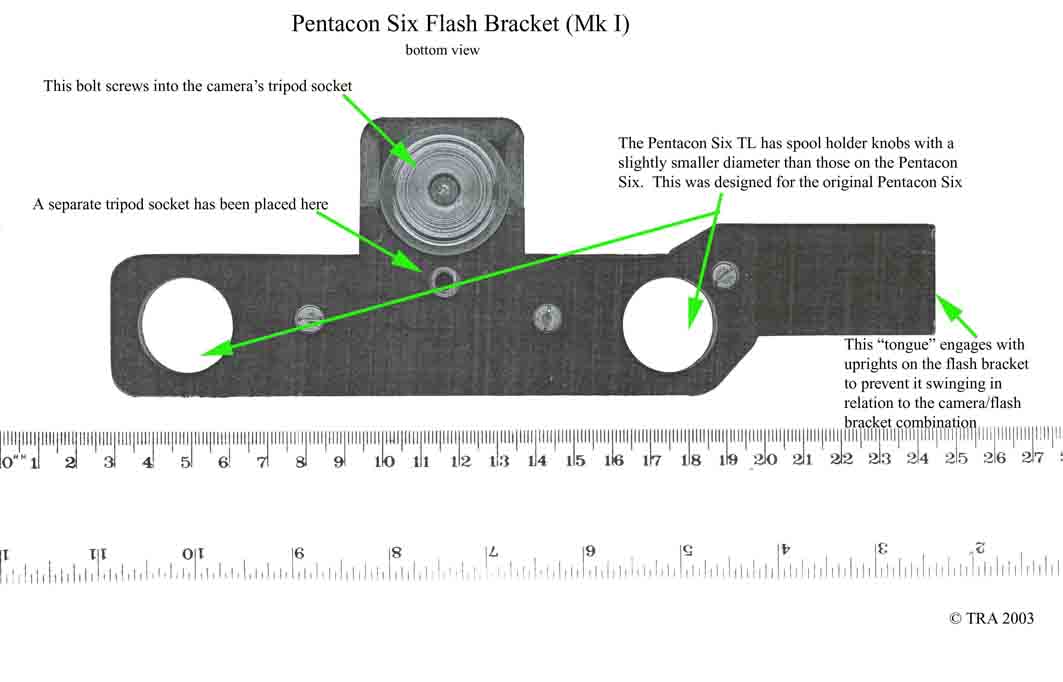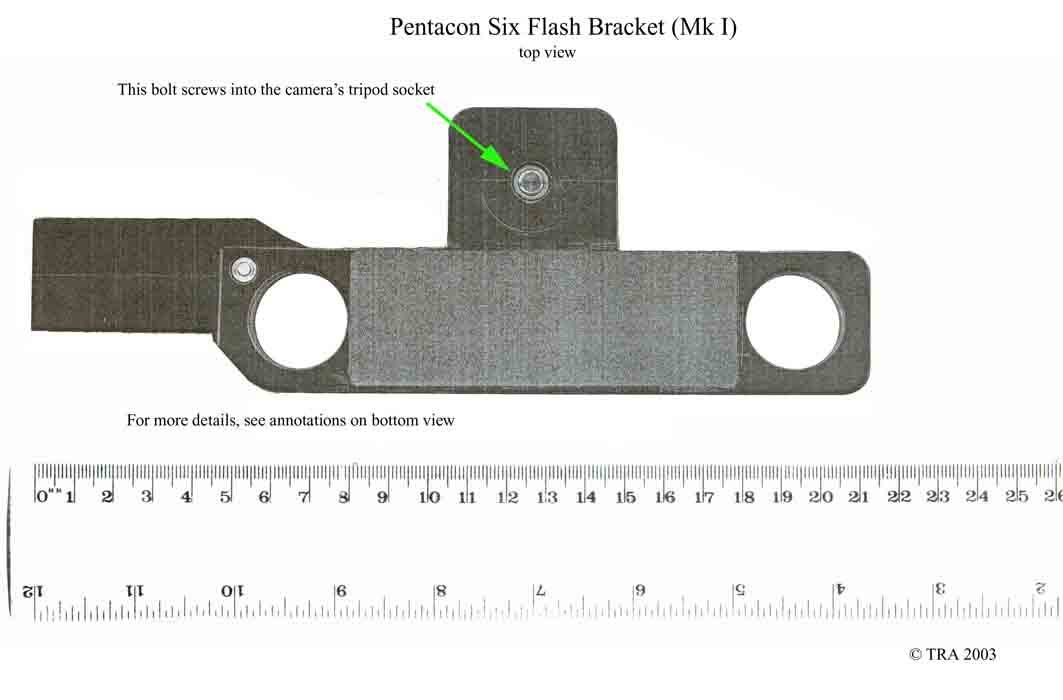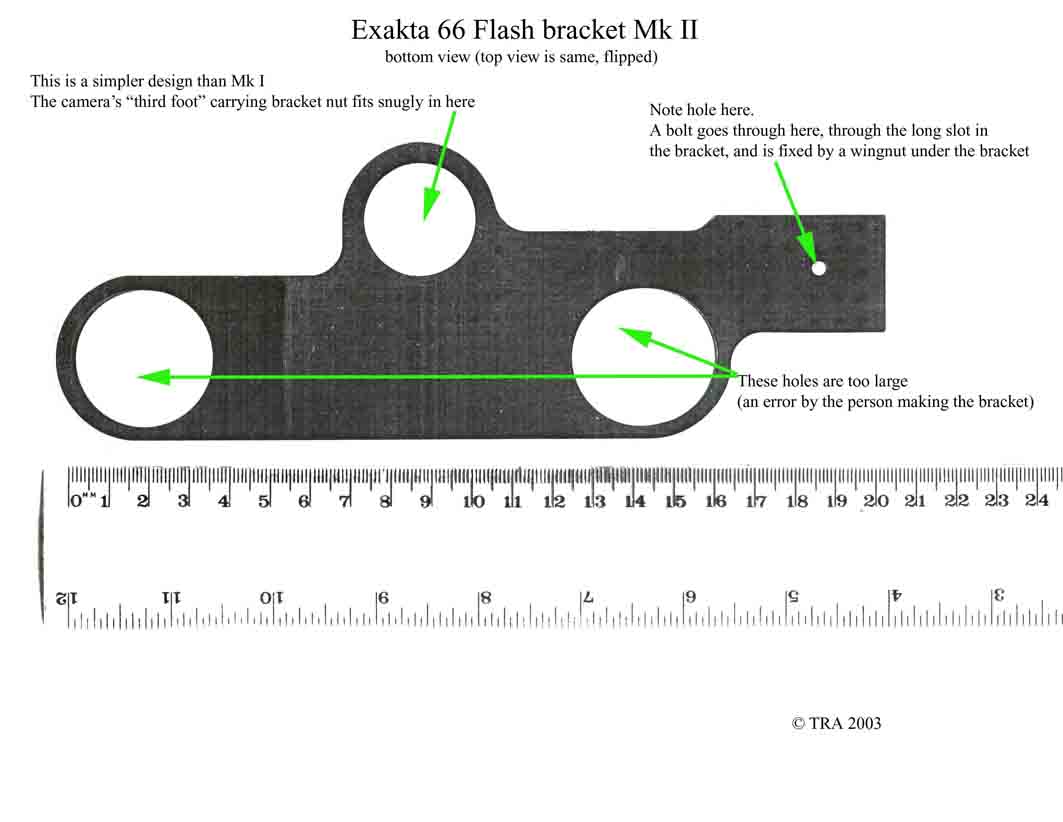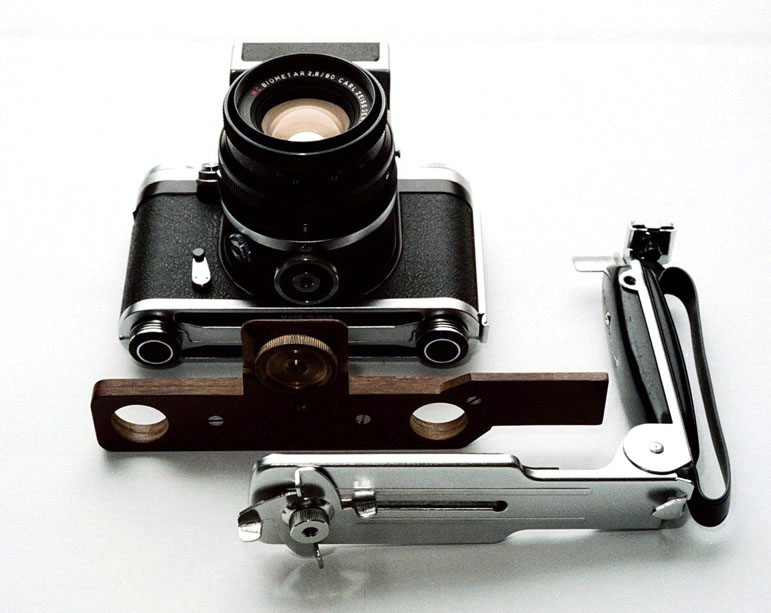
[C309-27/27A]
This plate has a large knurled wheel that screws into the camera’s tripod socket.
Just behind this wheel is a ¼” threaded socket into which the flash bracket screws.
The projection to the right of the adaptor plate in this picture engages with the upright on the flash bracket,
preventing it from swivelling back and forth.
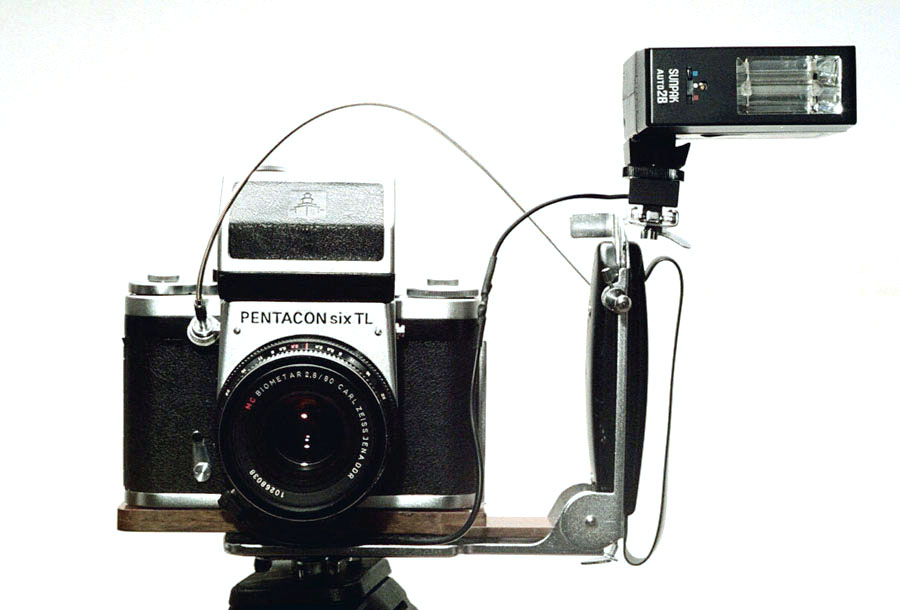
[C309-30/30A]
The flash bracket cable release is an optional extra that works well. It is threaded to screw into the bracket and has a locking screw for longer [non flash!] exposures.
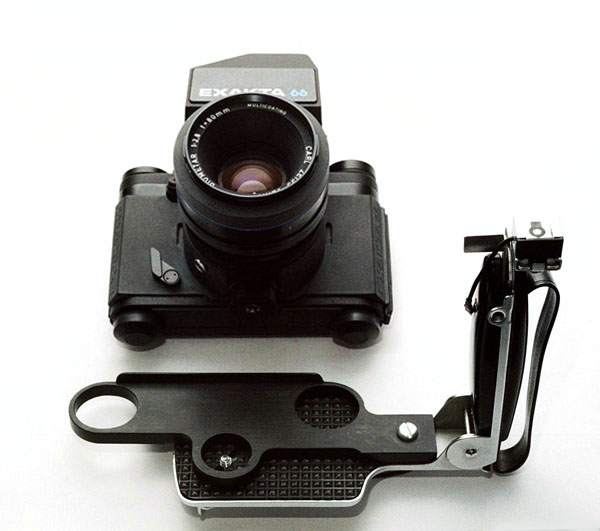
[C309-28/28A]
This bracket looks as though it was designed for a twin-lens reflex like the Rolleiflex.
The adapter plate has a vertical ridge at the back, to prevent the camera swivelling.
However, this is harder to make, and also prevents opening the back without removing the adapter.
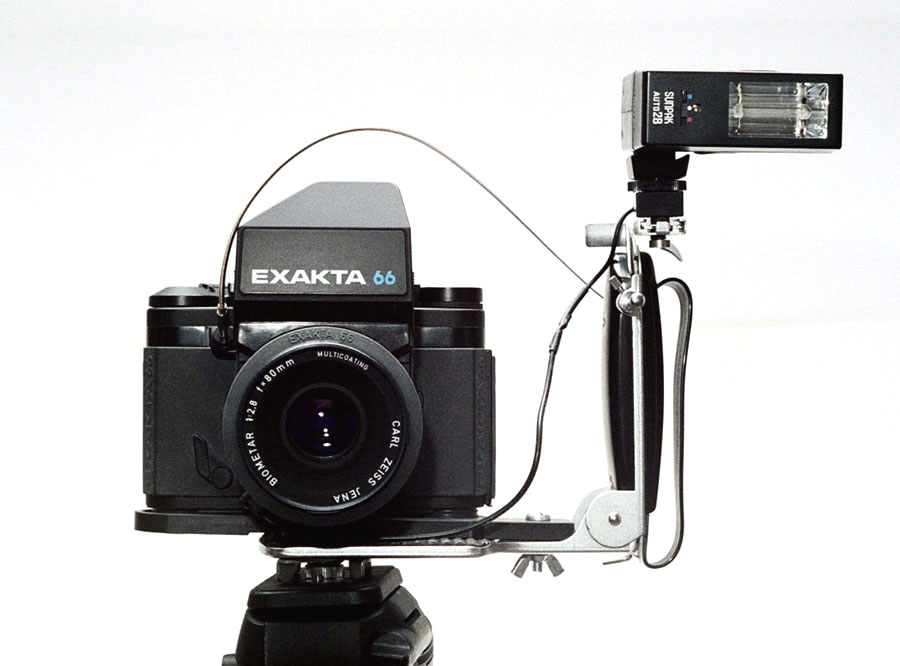
[C309-29/29A]
